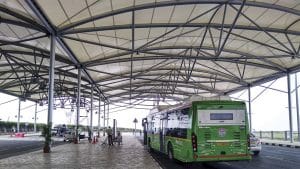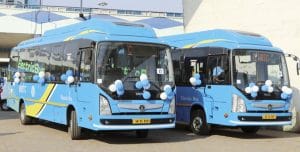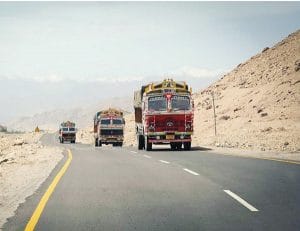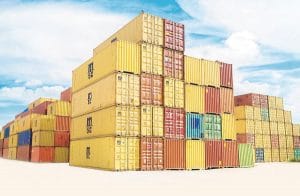The 60th SIAM annual Convention against the backdrop of Covid made for some very interesting insights.
Story by Deepti Thore and Deven Lad
Accounting for almost 7.1 per cent of India’s GDP and providing direct and indirect employment to about 37 million people, the Indian auto industry has been battling some unprecedented challenges for some time now. Witnessing the steepest ever decline in the first quarter (April – June 2020) of the current financial year with vehicle sales plummeting by over 75 per cent as compared to the corresponding period last year, the industry has seen a good escalation in its working capital needs in order to address regulatory as well as market requirements. More regulations are on the way and also the market requirements are shifting rapidly. \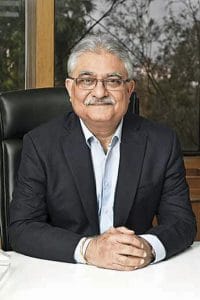
Amid such developments, the 60th Annual SIAM held at Delhi recently (under the theme, ‘Re-building the Nation, Responsibly’) saw Rajan Wadhera, Past President, SIAM & Senior Advisor, Mahindra & Mahindra, announce in his inaugural speech the need for regulations and how they would help to catch up with the rest of the world in terms of specifications and vehicle standards. “There is however a need for the government to intervene and resolve the problems faced by the automotive manufacturers,” he said. Opining that it was necessary to strengthen the auto industry so that it is capable of investing further into the upcoming safety regulations, Wadhera expressed that Indian auto industry is reeling under pressure because of the Covid pandemic.
The return on investment
Stating that the depreciation on investments had been huge, Wadhera averred that commensurate revenues have not been realised by the industry due to the lack of consumer demand. He remarked, “There is a need to push the Indian automobile industry to greater heights and adopt required measures for demand revival in the light of the recent pandemic.” Speaking against the background of the implementation of BSVI emission norms in April 2020 and the developments that followed, Wadhera touched upon the challenges faced by automakers, dealers and the suppliers since the slowdown in 2019 and during the during the April and June lockdown.
Pointing at the auto industry’s 49 per cent contributing to the manufacturing GDP and a turnover of USD 120 billion in FY2018-19, Wadhera mentioned that this is perhaps the most versatile and an all-inclusive industry. Drawing attention to the 15 per cent contribution of the Indian auto industry to the country’s GST revenue kitty of Rs.1,50,000 crores per annum, Wadhera said that it is the fifth largest in the world and exports products to 190 countries. Informing that the Indian auto industry generates export revenue worth USD 27 billion, Wadhera in his speech said that it has achieved a successful transition to BSVI. Opining that the industry has displayed immense resilience, Wadhera said that the government has helped the industry for it to get back on its feet. “It took a lot of efforts to re-start operations,” he added.
Decline in the CV industry
Informing that the government helped the Indian auto industry to airlift components from China; to get the trucks to ply for essential and non-essential goods; to reduce the repo rates, to extend the moratorium for loan repayment, and to begin operations in multiple shifts including the night shift, Wadhera said that stakeholders across the value chain need to work together to ensure that growth returns to the Indian auto industry. Stating that it was essential to revive demand, to engineer a long-term regulatory roadmap, to develop infrastructure, and work towards an all-inclusive ‘Atmanirbhar Bharat’ mission, he mentioned that the commercial vehicle industry has faced its second longest slowdown in the last 15 years due to the rise in the cost of ownership and the introduction of the axle load norms. He also expressed the need to revive consumer demand.
Drawing attention to challenges like job uncertainty, income losses and a huge drop in consumer sentiment, Wadhera explained that things started going downhill from FY2019-20. A drop of about 18 per cent was witnessed in FY2019-20, he added. Stating that some CV segments witnessed a sharp decline of up to 45 per cent, Wadhera said the CV industry was in particular affected by liquidity crunch and regulations from various quarters. Proposing specific recommendations like reduction in GST from 28 per cent to 18 per cent for all vehicle categories, Wadhera said that the reduction in taxes would significantly help in uplifting the demand for automobiles.
Reviving demand
Drawing attention to the government’s move to develop a champion export scheme which would benefit companies having an export potential at one end, and provide India to become an attractive sourcing destination for the world at the other, Wadhera averred that attention needs to be given to minimise the cost disadvantage on logistics. To support Brand India, the government, he added, is also encouraging activities to strengthen the Indian auto sector and export good number of vehicles. He pointed at SIAM’s suggestion to engineer an incentive-based vehicle capex, and to fund allocation for STUs plying diesel and CNG buses similar to electric buses under the FAME II scheme. Speaking about the need for the auto sector and the government to work closely, Wadhera expressed that the auto industry is finding it tough to comply with regulations coming up in the face of a demand deficit. To revive auto demand, it will take a lot of doing and undoing on the policy front as well, he added.
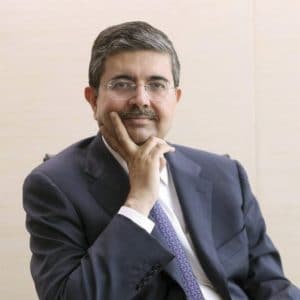
Uday Kotak, President, CII, and Managing Director & CEO, Kotak Mahindra Bank, drew attention to the supply-side bottlenecks witnessed at various state and regional levels from time to time due to the sudden lockdown. He opined that the festive season would provide the required demand boost. Stating that money is available for financing the vehicles, it is the demand that is lacking, he averred. “While the manufacturers are all geared up and working hard to build the capacity for October and November festive season, it is important there is good demand, said Kotak. He drew attention to the automotive mission plan till 2026, and stated that it was necessary to target sector ramp-up such that it would contribute 12 per cent of the GDP instead of seven per cent by 2026. Opining that to stay on course, there was a need to stimulate, Kotak said that it is demand and the subsequent scale that will increase industry competitiveness as well as their ability to offer vehicles at an attractive price.
Infrastructure is the way to growth
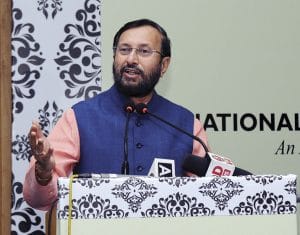 Stating that infrastructure development is the only answer, Prakash Javadekar, Union Minister of Environment, Forest & Climate Change, Information & Broadcasting and Heavy Industries & Public Enterprises, Government of India, mentioned that the five-kilometre tunnel on the road to Leh would save tremendous amount of time. He touched on the performance of the rural economy and the sale of tractors, and expressed that the government has taken an initiative to support 5000 electrical buses. Opining that EV growth depends on various factors, Javdekar mentioned that cost is a major factor. He drew attention to many private players developing charging infrastructure and the decision to support battery swapping technology taken. The union minister announced that it is a matter of time before the cost of EVs reach a level where they are comparable to that of the existing vehicles.
Stating that infrastructure development is the only answer, Prakash Javadekar, Union Minister of Environment, Forest & Climate Change, Information & Broadcasting and Heavy Industries & Public Enterprises, Government of India, mentioned that the five-kilometre tunnel on the road to Leh would save tremendous amount of time. He touched on the performance of the rural economy and the sale of tractors, and expressed that the government has taken an initiative to support 5000 electrical buses. Opining that EV growth depends on various factors, Javdekar mentioned that cost is a major factor. He drew attention to many private players developing charging infrastructure and the decision to support battery swapping technology taken. The union minister announced that it is a matter of time before the cost of EVs reach a level where they are comparable to that of the existing vehicles.
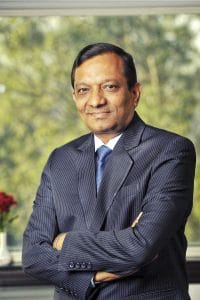 Announcing that GST has been an important tax reform, Javadekar said that the GST council would evaluate the decision to reduce the rate of GST on vehicles taking into account parameters that include economic and social impact, and revenue impact. “Details of the proposals are being worked out by the finance ministry,” he revealed. On scrappage policy, the union minister said that much has been discussed. All the stakeholders have given their inputs and the government is ready with the proposal. Expect the scrappage policy to be announced soon, he said further. Talking about the Automotive Mission Plan (AMP), Dr. Pawan Goenka, past SIAM president and the Managing Director, Mahindra & Mahindra, said that it was necessary to revisit it. A discussion should be carried out with the auto industry, the component industry and the dealer association to layout a new map, he added. Stating that 24 task forces were set up in India under the Ministry of Commerce and Industry and numerous reviews were taken to help support the auto sector, Dr. Goenka said that it achieved a growth of 16 per cent CAGR over the last 25 years. “Compared to the revenue of Rs.12,000 crores in 1993, the sector today has reached a revenue mark of Rs.5,75,000 crores,” he expressed.
Announcing that GST has been an important tax reform, Javadekar said that the GST council would evaluate the decision to reduce the rate of GST on vehicles taking into account parameters that include economic and social impact, and revenue impact. “Details of the proposals are being worked out by the finance ministry,” he revealed. On scrappage policy, the union minister said that much has been discussed. All the stakeholders have given their inputs and the government is ready with the proposal. Expect the scrappage policy to be announced soon, he said further. Talking about the Automotive Mission Plan (AMP), Dr. Pawan Goenka, past SIAM president and the Managing Director, Mahindra & Mahindra, said that it was necessary to revisit it. A discussion should be carried out with the auto industry, the component industry and the dealer association to layout a new map, he added. Stating that 24 task forces were set up in India under the Ministry of Commerce and Industry and numerous reviews were taken to help support the auto sector, Dr. Goenka said that it achieved a growth of 16 per cent CAGR over the last 25 years. “Compared to the revenue of Rs.12,000 crores in 1993, the sector today has reached a revenue mark of Rs.5,75,000 crores,” he expressed.
 Stressing on the need to augment exports, reduce imports, create more jobs and scale-up investments in R&D, Goenka averred that there was a need to eliminate gaps in competitiveness, quality, cost and technology in order to reduce imports by half in the next four to five years. Stressing on the need to re-think, re-strategise, re-organise and implement steps to reduce the logistics costs, he called for relaxing of duties and taxes, FTAs and similar other trading pre-requites with bigger automobile markets. Stating that India is currently the largest exporter to Central and South America, Dr. Goenka said that 40 per cent of the export volume currently goes to these markets, followed by central and East Africa. Exports now account for 16 per cent of the industry’s total output, he added. Touching upon the theme of the convention, ‘Building the nation responsibly through sound development of the industry’, Kenichi Ayukawa, President Elect, SIAM and Managing Director & CEO, Maruti Suzuki India, said that sound development of the industry means increase in production sales volume, exports, and higher localisation of parts. It also means self reliance or ‘Atmanirbhar Bharat’, he added.
Stressing on the need to augment exports, reduce imports, create more jobs and scale-up investments in R&D, Goenka averred that there was a need to eliminate gaps in competitiveness, quality, cost and technology in order to reduce imports by half in the next four to five years. Stressing on the need to re-think, re-strategise, re-organise and implement steps to reduce the logistics costs, he called for relaxing of duties and taxes, FTAs and similar other trading pre-requites with bigger automobile markets. Stating that India is currently the largest exporter to Central and South America, Dr. Goenka said that 40 per cent of the export volume currently goes to these markets, followed by central and East Africa. Exports now account for 16 per cent of the industry’s total output, he added. Touching upon the theme of the convention, ‘Building the nation responsibly through sound development of the industry’, Kenichi Ayukawa, President Elect, SIAM and Managing Director & CEO, Maruti Suzuki India, said that sound development of the industry means increase in production sales volume, exports, and higher localisation of parts. It also means self reliance or ‘Atmanirbhar Bharat’, he added.
Regulatory roadmap and infrastructure
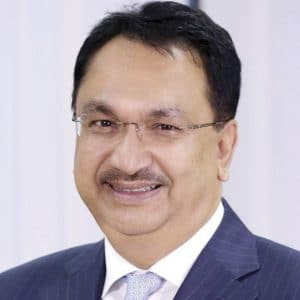 Highlighting the auto industry’s fire safety and emission norms adaptation record, Vikram Kirloskar, Past President, SIAM and Vice Chairman, Toyota Kirloskar Motors, said that significant investments have been made. These would require time to recoup, he added. Opining that the industry stands at a crossroad with various technological pathways and alternative energy options available for a cleaner, greener and a sustainable future, Kirloskar mentioned a need to pause and re-evaluate the options by keeping in mind the recent geopolitical developments, ultimate national objectives, including ‘self-reliant India’, and the need to safeguard the industry competitiveness. Calling for a long term, stable regulatory roadmap, he averred that the adverse impact of the pandemic on the industry is unprecedented. “This warrants a re-look at the timelines of future regulations like fuel efficiency norms and BSVI phase two,” he added.
Highlighting the auto industry’s fire safety and emission norms adaptation record, Vikram Kirloskar, Past President, SIAM and Vice Chairman, Toyota Kirloskar Motors, said that significant investments have been made. These would require time to recoup, he added. Opining that the industry stands at a crossroad with various technological pathways and alternative energy options available for a cleaner, greener and a sustainable future, Kirloskar mentioned a need to pause and re-evaluate the options by keeping in mind the recent geopolitical developments, ultimate national objectives, including ‘self-reliant India’, and the need to safeguard the industry competitiveness. Calling for a long term, stable regulatory roadmap, he averred that the adverse impact of the pandemic on the industry is unprecedented. “This warrants a re-look at the timelines of future regulations like fuel efficiency norms and BSVI phase two,” he added.
Stating that an abrupt change that alters the planned lifecycle of products affects badly, Kirloskar urged the government to set up longer timelines, provide a clear vision on the same and fix dates for changes. Stressing on the need for the Indian auto industry to be the number one manufacturing hub of the world, Nitin Gadkari, Union Minister of Road Transport & Highways (MoRTH) and Micro, Small and Medium Enterprises(MSME), Government of India, expressed that EVs will find a way into the industry. He said that the Government would discuss with all the EV makers and fix up the standard quality norms. Drawing attention to the work done by his ministry in areas of mobility and road infrastructure, he informed that 22 green express highways were being built. “These,” he added, “include the Delhi-Mumbai expressway (with Rs.100000 crores investment) Meerut-Delhi expressway, Bangalore-Chennai expressway, Hyderabad-Nagpur expressway and Amritsar-Delhi expressway.”
Water and air pollution
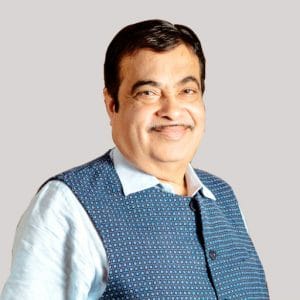 Highlighting air and water pollution as crucial issues, Gadkari pointed out that emission norms and environmental sustainability is important. Safety and regulations are also important to reduce the number of accidents in the country, he said. Giving an example of the Tamil Nadu Government having reduced accidents and deaths by 25 per cent in co-operation with the World Bank, Gadkari said that there was a need to promote alternative fuels. India imports oil worth rupees seven lakh crores annually, he informed. Stating that there was a need to strengthen the ‘Atmanirbhar Bharat’ mission through the use of alternative fuels, Gadkari averred that LNG is the fuel of the future. He clarified that the government is not giving up on hydrogen fuels and electricity as they too are important. Use of such mediums will save foreign exchange and create more employment potential, Gadkari opined.
Highlighting air and water pollution as crucial issues, Gadkari pointed out that emission norms and environmental sustainability is important. Safety and regulations are also important to reduce the number of accidents in the country, he said. Giving an example of the Tamil Nadu Government having reduced accidents and deaths by 25 per cent in co-operation with the World Bank, Gadkari said that there was a need to promote alternative fuels. India imports oil worth rupees seven lakh crores annually, he informed. Stating that there was a need to strengthen the ‘Atmanirbhar Bharat’ mission through the use of alternative fuels, Gadkari averred that LNG is the fuel of the future. He clarified that the government is not giving up on hydrogen fuels and electricity as they too are important. Use of such mediums will save foreign exchange and create more employment potential, Gadkari opined.
Explaining that the Indian economy for ethanol is Rs.20,000 crores currently, Gadkari said that his government was making efforts to grow it to the Rs.1,00000 crore economy mark. “To do so, the government has allowed production of ethanol from rice as the country has surplus rice and food grains,” he added. Stating that the government has now allowed companies whose worth is more than Rs.250 crores to start their own petrol pumps on the condition that they should have one alternative fuel pump as well, Gadkari said that countries like USA, Canada and Brazil are using flex engine technology, which is proven. He urged the Indian auto industry to look at this technology to reduce pollution and to reduce dependence on imported fuel.
World’s second largest road network
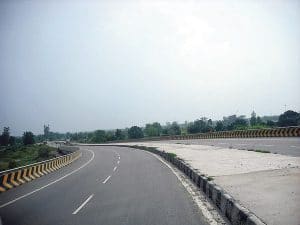
Announcing that India now has the second largest road network in the world, Gadkari mentioned that the speed of construction has gone up from two-to-three kms a day to 40 kms a day. Informing that road safety norms in place have led to manufacturers successfully implementing regulations crucial to vehicle safety, such as crash norms, ABS, airbags, seatbelts, reverse parking assistance system, VTS to name a few, Gadkari explained that this has been made possible by the commitment of Indian auto industry. “However, apart from making the vehicle safer it is also important to complement it with the right road designs,” he added. Pointing at the future of mobility, the union minister opined that this would require integration with infrastructure. Informing that the highways and expressways are enabled with lane markings suitable for implementation of Advanced Driver Assist technologies, Gadkari averred that the Motor Vehicle Amendment Act 2019 has promoted use of digital technologies for traffic safety and rule enforcement.
Touching on the successful implementation of FastTag, Gadkari said that infrastructure growth and enhancement is being looked at. It is being looked at not just from a connected vehicle point of view, but also from an electric and alternate fuel point of vehicle, he stated. Announcing that his government would try to bring about an integrated fuel road map, phase-wise intervention of different fuel options and supporting infrastructure, Gadkari said that a need was for a more planned approach taking into account global development, infrastructure readiness, localisation, the requirement of cost competitiveness. “This,” he said, “would encourage the Indian auto industry to become a front runner on the global scene.”
Co-operation and guidance
Explaining that it was important for the industry to co-operate, co-ordinate and communicate with other stakeholders to support the ‘Atmanirbhar Bharat’ vision, Gadkari said that the auto industry leaders should develop a platform where retired experts who have made significant contribution to the auto industry and to the government and are impartial, are able to provide guidance. He also suggested that the industry should have a good technological research centre to train skilled manpower. Stressing on the need to carry out research and development, the union minister said that customer preference is changing. Treasurer, SIAM & Managing Director and Chief Executive Officer, VE Commercial Vehicles, Vinod Aggarwal, said that infrastructure development is extremely important for the CV industry and the economy. Drawing attention to the 70 per cent drop in CV volumes in comparison to FY2019-20, Aggarwal said that it would take one-to-two years to get back to the FY2018-19 level.
Local approach
Acknowledging the automobile industry’s resilience, adaptability and innovation potential, Piyush Goyal, Union Minister of Commerce & Industry and Railways, Government of India, pointed out that August sales numbers of automobiles were slowly climbing up to the pre-Covid level. Of the opinion that there was a need to create a sustainable value chain, Goyal said that, for India to be a preferred supplier destination, there was a need to focus on innovation, design, electric and autonomous vehicle technologies among others. Stating that India’s export potential is hampered because of valid and non-valid barriers faced in the industry, Goyal said that global-scale plants need to be built. Plants that are on par with the international standards.
Stressing on the need for auto manufacturers to improve scale and quality so that it is worthy of export, Goyal said that initiatives like ‘Atmanirbhar Bharat’ will help build the country’s economy and boost the automotive sector. “Investments in R&D and innovation would help,” he added. Drawing attention to the credit guarantee model, creation of automotive hubs and clusters, collaboration with states for easier availability of land, and adoption of a more competitive approach to domestic manufacturing as some of the innovative models devised by the government to boost exports, Goyal mentioned that upskilling was important for the Indian auto industry to grow.



